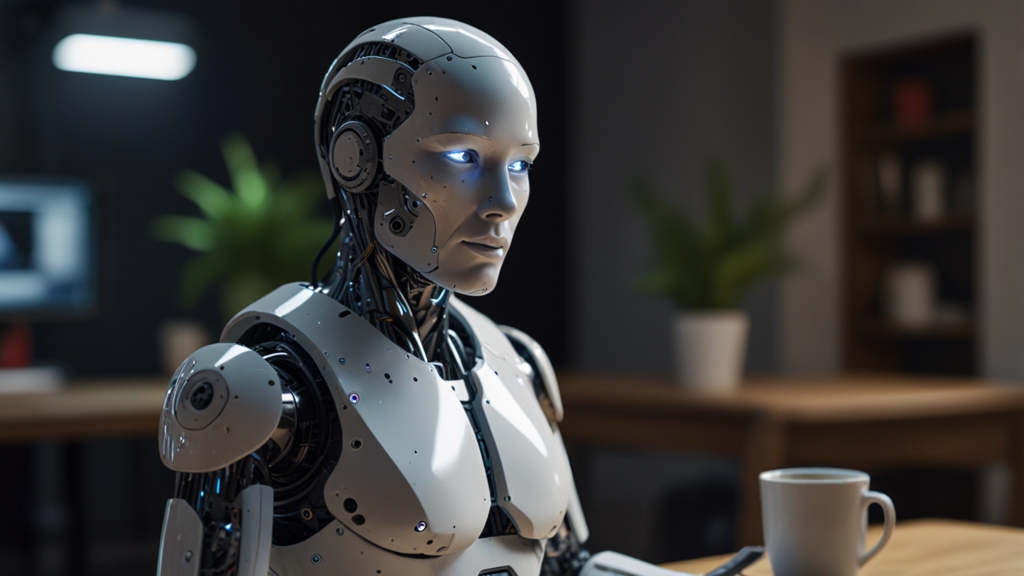Is AI the Answer to Human Loneliness? A Deep Dive into Social Robotics
As society progresses into the 21st century, loneliness has emerged as a significant social problem, exacerbated by factors like urbanization, aging populations, and the increasing prevalence of the digital world over face-to-face interactions. Amid these societal shifts, many are looking to technology for solutions. One promising avenue is the development of social robotics—robots designed to interact with humans on a social level. But could AI truly be the answer to human loneliness?
The Problem of Loneliness
Loneliness is more than just feeling sad or isolated; it has tangible effects on physical and mental health. Studies have shown that chronic loneliness can increase the risk of heart disease, depression, and cognitive decline. In a rapidly digitalizing world where human interactions are frequently mediated by screens, the sensation of being alone persists, even in virtual 'connectedness.' As traditional social structures weaken, the quest for reliable companionship becomes ever more critical.
Enter Social Robotics
Social robots are specifically designed to engage with humans on an emotional level. Unlike traditional robots used for manufacturing or logistics, social robots aim to recognize, process, and respond to social stimuli. This advances the relationship from a mere user-device interaction to a more nuanced, emotionally intelligent engagement.
How Social Robots Work
At the heart of social robots are advanced AI algorithms capable of natural language processing, facial recognition, and behavioral analytics. Examples include SoftBank’s Pepper, a humanoid robot designed to recognize emotions and engage in meaningful conversation, and Sony’s Aibo, a robotic pet that mimics the behavior of a real dog. These robots can understand and respond to human emotions, making the interaction feel more organic and less mechanical.
“Social robots can bridge the gap between human loneliness and the need for companionship by providing a consistent, understanding, and non-judgmental presence,” states Dr. Michelle Adams, a leading researcher in social robotics.
The Benefits of Social Robots
The introduction of social robots has brought multiple benefits, particularly for those who are most vulnerable to loneliness, such as the elderly. In nursing homes and assisted living facilities, these robots can offer consistent companionship, helping to alleviate feelings of isolation. Additionally, social robots can assist caregivers by monitoring health indicators and reminding patients to take medication, thereby improving overall quality of life.
Ethical and Practical Concerns
However, the deployment of social robots is not without its challenges. Ethical concerns arise regarding dependency on robots for emotional support. Can a machine truly fulfill the complex emotional needs of a human being, or does it risk deepening the loneliness when the artificial nature of the relationship becomes apparent?
Another practical concern is the accessibility and cost of these advanced robots. High development and operational costs can make social robots a luxury rather than a universal solution, potentially exacerbating social inequalities.
“While social robotics holds immense promise, it is essential to balance technological advancements with ethical considerations. The goal should be to complement, not replace, human interaction,” reminds Professor John Williams, an ethicist specializing in AI technologies.
The Future of Social Robotics
The future of social robotics will likely involve further advancements in artificial emotional intelligence and machine learning. These developments could make robots even more adept at understanding and responding to human emotions, potentially creating deeper, more meaningful relationships.
Research and development in this field are expanding rapidly, with many projects focusing on creating more affordable and widely accessible solutions. Governments and private sectors are also increasingly investing in this technology, recognizing its potential to improve social welfare.
“The integration of social robots into daily life could transform how we deal with loneliness, but it must be done thoughtfully and inclusively,” says Lucy Bennet, a technology policy expert.
Conclusion
Social robots offer a fascinating glimpse into how AI can address human loneliness. While they present many benefits, including improved emotional well-being and support for vulnerable populations, they also bring forth significant ethical and practical challenges. As technology continues to evolve, the key lies in finding a balanced approach that enhances human interaction rather than replacing it. The future of social robotics holds promise, but its success will depend on how well we integrate these machines into the complex fabric of human relationships.














